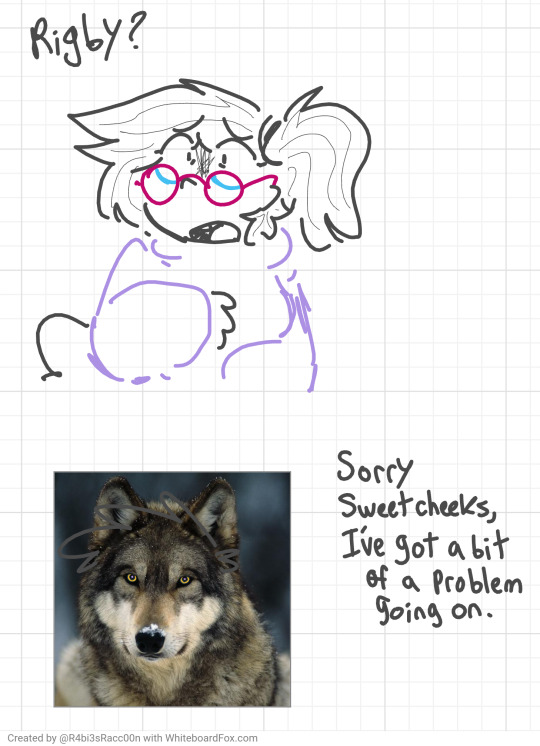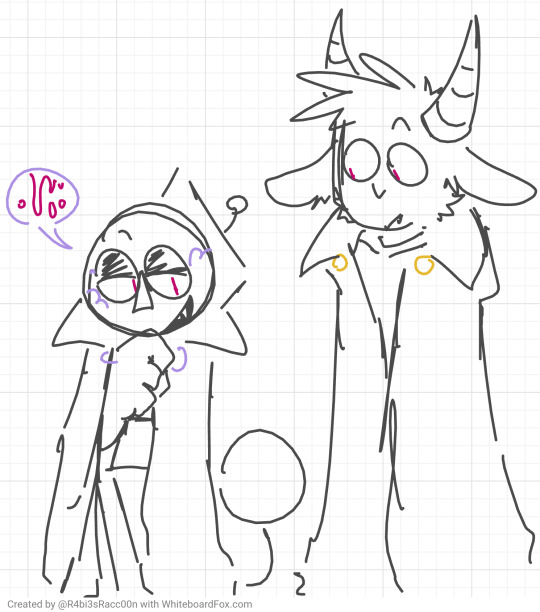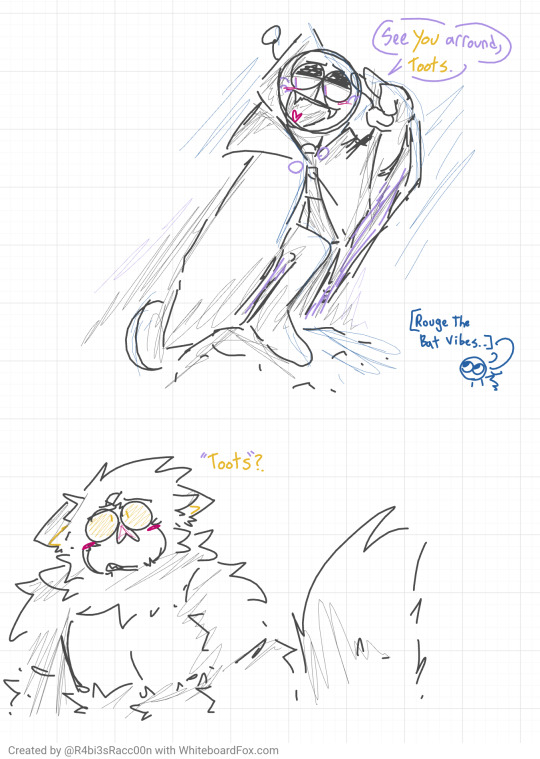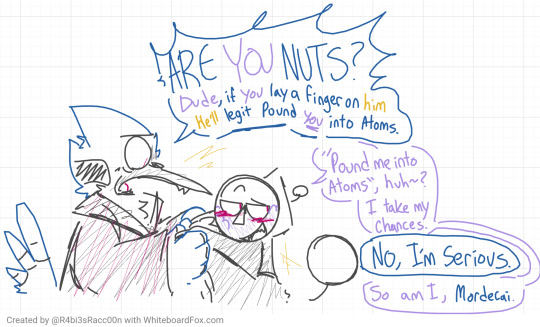#vawe
Explore tagged Tumblr posts
Text

Reposting for myself because I’m blocked
2K notes
·
View notes
Text
Alright, let's try a thought exercise!
This thought exercise requires us to start by agreeing that women are an oppressed class (cis women, trans women, non-binary people who at least partially id as women or woman-adjacent).
If you can't concede that as a basis, then keep scrolling, this post isn't for you. I'm not here to convince MRAs that systemic misogyny – aka the patriarchy – is real. Alright? Alright.
I think we can all agree that, besides the institutional oppression faced by oppressed groups, they all also face acts of individualized concrete violence (which are then vindicated by institutions and/or sociocultural disinterest or even active acceptance).
You know, that thing we call hate crimes? Acts of violence committed against an individual by mere reason of an aspect of who they are which makes them oppressed and/or marginalized.
We discuss women as an oppressed class as well, but, save for specific feminist factions (largely, non-liberal feminists from the global south), no one really talks about misogynistic hate crimes.
Even though misogynistic men murder women and girls for no reason other than their own misogyny every day. There are exceptions, of course, but most of the time, when a man kills a woman it's not to steal from us, not as revenge for something shitty we did to them, not because we were in an altercation and it simply happened. No.
It's because "if I can't have her, then nobody can have her" (women as property), "she rejected me" (woman denied sex or romance to a man who wanted it), "she was trying to leave" (culmination of domestic violence), "she made me feel emasculated" (reaffirming masculinity through violence).
We're raped and otherwise sexually abused ALL the time as well, and our perpetrators are by far mostly cis men. I hope I don't have to go into detail on how that's related to misogyny.
Chile has pretty progressive femicide legislation as of somewhat recently. The legal definition of femicide went from being "male partner or ex-partner who murders his female partner or ex-partner" to "any killing of a woman for reason of her gender", which explicitly includes:
Women killed by men they were never involved with but who acted out of jealousy/possessivenes or as revenge because they were rejected.
Women being killed by men for being gender non-conforming.
Women being killed for being trans, lesbian or bisexual.
Women killed by men because they were sex workers.
(So, no, before the MRAs who kept reading get their panties in a twist, femicides in Chile are not defined as every single time a man kills any random woman. The motive for the murder has to be patriarchal bigotry in some form and that has to stand to scrutiny in court.)
If we accept that, like in the Chilean legislation of femicide, any act of violence committed by a man against a woman due to patriarchal bigotry is a misogynistic hate crime, shouldn't we be more alarmed with how astoundingly common and NORMALIZED hate crimes against women are?
How many women and girls do you know who have been sexually abused by a man or boy? How many which have been beaten? How many women do you know who have controlling and violent boyfriends or husbands or fathers or older brothers? How often do you hear about a woman who made it out alive by the skin of her teeth from the hands of a man who was absolutely going to kill her? And the ones that didn't make it? How about when misogyny intersects with race, disability, transness, gayness, socioeconomic class, religious minorities, and so on?
I firmly believe that the only reason we don't talk about these things as misogynistic hate crimes is because, despite being oppressed, women aren't a numerical minority. But, rather than that giving visibility to the violence we face, it invisibilizes it even more. It became society's normal to have approximately half of its population constantly subjected to hate crimes, to the point that there's whole TikTok trends dedicated to turning it into a joke (the "joke" where men pretend they're trying to suffocate their girlfriends with a pillow for being annoying) and until very recently it was perfectly ok for standup comedians to joke about it too. Precisely, because women are an oppressed class and violence against us is both socially sanctioned and encouraged, when it's hyper-visible, it becomes at best a fact of life that deserves no one's attention, and at worst it becomes a recurrent joke.
I, personally, believe that femicides and the largest portion of rapes suffered by women are misogynistic hate crimes, as are many other instances of violence women are used to now and that we deal with as a natural(ized) aspect of living as a woman. Which I know will get me called all sorts of names and slurs, but I can't see where my logic is failing.
706 notes
·
View notes
Text
Moreee..mORE VAMPS AND WOLVES

Jjjokes jokes

THOMAS


Sorry not sorry
Shipping-ish
GUH TYPO ON THE LAST ONE "I'll take my chances." 😭😭


Benskips stuff :] (explodes)
#vaw! regular show au#regular show#art#whiteboard fox#benson dunwoody#regular show skips#benson with a tail bcuz i can#regular show rigby#mordecai regular show#thomas regular show#vampire#werewolf#alternate universe#...MMMM BENSKIPP??.. ah what the heck it is#benskips#skipson#rigleen just because
74 notes
·
View notes
Photo

An F2H-3 and three F2H-4s of Airborne Early Warning Squadron 11 off USS Hornet (CVS-12) in flight, 1959
70 notes
·
View notes
Text
radical facts - short feminist facts
#anti sex industry
Sex Trafficking Worldwide
Globally, 4.8 million victims get trafficked for the sex industry every year.
This category includes any adults who involuntarily participate in the sex industry and children experiencing commercial sexual exploitation. 3.8 million victims were adults, and 1 million were children. Globally, 99% of victims were women and girls.
(Data sourced via traffickinginstitute.org)
#radicalfacts#feminist facts#anti sex industry#anti sex trafficking#anti sex trade#sex work is not work#listen to sex workers#human trafficking#vaw#vawg#female exploitation#systemic exploitation#female reality#feminism#radical feminism#end prostitution#abolish prostitution
39 notes
·
View notes
Text
instagram
safe_advocates
When someone says you’re “mature for your age,” they’re not being nice. They are grooming you.
This is how predators try to break down your defenses and gain your trust. It’s not about you being special. It’s about them trying to manipulate you.
#grooming
#VAW
#manipulation
#believesurvivors
#endviolenceagainstwomen
#halton
#intimatepartnerviolence
#IPV
#endsexualviolence
#survivors
#blacklivesmatter
#safe
#supportsurvivors
#trauma
#ptsd
#addiction
#womenempowerment
#consent
#narcissisticabuse
#sexualabuse
#peel
#physicalabuse
#metoo
#domesticviolence
#domesticviolencesurvivor
#sexualassault
#livedexperience
#communitysupport
#reflecting
#healingjourney
#Instagram#grooming#VAW#manipulation#believesurvivors#endviolenceagainstwomen#halton#intimatepartnerviolence#IPV#endsexualviolence#survivors#blacklivesmatter#safe#supportsurvivors#trauma#ptsd#addiction#womenempowerment#consent#narcissisticabuse#sexualabuse#peel#physicalabuse#metoo#domesticviolence#domesticviolencesurvivor#sexualassault#livedexperience#communitysupport#reflecting
3 notes
·
View notes
Video
Vietnam war by Linh Yoshimura Via Flickr: 1965 - Aerial photograph showing a profile view of a United States Navy Northrop Grumman E-2 Hawkeye, from Early Warning Squadron 11 (VAW-11), nicknamed the "Early Elevens", with a large radar dish (radom) mounted above the main cabin and the numbers "740" on its nose, while in flight.
23 notes
·
View notes
Note
how did the lady want you to pronounce nevada?
An annoying way 🙏🏻
#I remember a spn convention where jared started making fun of the crowd#because they were all being annoying about the way he pronounced nevada#and I felt that in my soul#i think it was ne-vah-da in stead of ne-vaw-da#idk I just remember hating the lady so much I was determined to never pronounce it her way even if it was correct lmao
2 notes
·
View notes
Text
instagram
safehalton “If you can't be thankful for what you have, be thankful for what you have... escaped."
.
.
#domesticviolenceawareness #vaw #HALTON #SAFE #unwomen #orangetheworld #16daysofactivism #selflove #leavenoonebehind
#Instagram#domesticviolenceawareness#vaw#HALTON#SAFE#unwomen#orangetheworld#16daysofactivism#selflove#leavenoonebehind
26 notes
·
View notes
Text
A much more striking connection between the 2017 attacks, as far as I was concerned, wasn't listed in the report. Four of the five attackers had a history of domestic abuse, amounting to a catalogue of verbal and physical attacks on female relatives and, in the case of the Manchester bomber, Salman Abedi, a brutal assault on a young woman who was in his class at college; the figure rises to five out of six if we include Osborne, the right-wing extremist who drove a hired van into worshippers leaving a mosque in north London. Less information has emerged about the family relationships of the remaining attacker, Khuram Butt, but we know that he displayed a somewhat detached view of fatherhood; Butt led the suicide attacks on London Bridge and Borough Market a matter of weeks after his wife had given birth to their second child. Another of the men in Butt's cell, Rachid Redouane, had a daughter aged seventeen months at the time he was shot dead by armed police, demonstrating a readiness to abandon infants which will figure in the biographies of a number of the perpetrators who appear in this book.
The patriarchal assumptions common among such men, who seek to control every aspect of the lives of their wives and children, extend neither to considering their long-term welfare nor to protecting them from the consequences of horrific public acts of violence. It is a chilling view of family relationships in which becoming a husband and father appears to have more to do with confirming a man's status - and acquiring residency rights, in some cases - than forming close attachments. The widows and children of terrorists have to live not just with grief and loss but with the notoriety of their male relatives, even in cases where they themselves were the first victims of an escalating species of male violence.
The wider pattern of terrorists with a history of domestic abuse certainly isn't limited to the UK: in the couple of years before the 2017 attacks, I kept noticing that the perpetrators of some of the most notorious terrorist attacks in Europe and the US had first been violent towards wives and girlfriends. Domestic violence turned up in the background of the security guard who attacked the Pulse nightclub in Florida (forty-nine dead, fifty-three injured), the lorry driver who drove into crowds in Nice on Bastille day (eighty-six dead, 458 injured), the elder of the two brothers responsible for the Boston marathon bombing (three dead, several hundred injured) and a fraudster who took hostages in a café in Sydney in December 2014 (two dead, three injured).
Critics will say that is to be expected, given that we are talking about a cohort of violent men, but that is my point: male violence doesn't stay in neat categories. Persistent offenders tend to have convictions for a whole range of violent offences, as I show in chapter two, and I'm suggesting that men who are used to beating, kicking, choking and stabbing women at home are considerably further along the road towards committing public acts of violence. Police and paramedics who have attended incidents of extreme domestic violence, coming upon a scene of injured women and children, pools of blood and overturned furniture, will recognise similarities with the aftermath of a marauding terrorist attack; these are men who have practised behind closed doors, relishing the sensation of holding the power of life or death over family members and becoming desensitised to the horrible effects of violence.
-Joan Smith, Home Grown: How Domestic Violence Turns Men Into Terrorists
#Joan smith#male violence#domestic terrorism#domestic abuse#terrorist attack#patriarchy#vawg#vaw#males are incompatible with health#female separatism
13 notes
·
View notes
Text
instagram
safehalton
Never forget your teenage self was a child too and she deserves the same amount of compassion and nurturing as your little self.
#healingyourinnerchild
#innerchild
#breakthesilence
#VAW
#endvaw
#believesurvivors
#endviolenceagainstwomen
#haltonregion
#intimatepartnerviolence
#IPV
#women
#endsexualviolence
#survivors
#genderbasedviolence
#mentalhealth
#rapeculture
#safehalton
#trauma
#ptsd
#consent
#narcissisticabuse
#sexualabuse
#psychologicalabuse
#physicalabuse
#metoo
#domesticviolence
#domesticviolencesurvivor
#sexualassault
#rapesurvivor
#livedexperience
#Instagram#healingyourinnerchild#innerchild#breakthesilence#VAW#endvaw#believesurvivors#endviolenceagainstwomen#haltonregion#intimatepartnerviolence#IPV#women#endsexualviolence#survivors#genderbasedviolence#mentalhealth#rapeculture#safehalton#trauma#ptsd#consent#narcissisticabuse#sexualabuse#psychologicalabuse#physicalabuse#metoo#domesticviolence#domesticviolencesurvivor#sexualassault#rapesurvivor
2 notes
·
View notes
Text
#feminism#itsamoidsworld#woman hating#male violence#vaw#links#native american#indigena#indigenous#marriage & nuclear family
16 notes
·
View notes
Text
instagram
safehalton
Remember, you are so much more than the pain you carry. You are a beacon of hope, a source of inspiration, and a force to be reckoned with.
Stay strong, keep shining, and never forget your worth. You are loved, cherished, and admired.
#breakthesilence
#VAW
#endvaw
#believesurvivors
#endviolenceagainstwomen
#haltonregion
#intimatepartnerviolence
#IPV
#women
#endsexualviolence
#survivors
#genderbasedviolence
#mentalhealth
#rapeculture
#safehalton
#survivorstrong
#trauma
#ptsd
#financialabuse
#consent
#narcissisticabuse
#sexualabuse
#psychologicalabuse
#physicalabuse
#metoo
#domesticviolence
#domesticviolencesurvivor
#sexualassault
#rapesurvivor
#livedexperience
#Instagram#breakthesilence#VAW#endvaw#believesurvivors#endviolenceagainstwomen#haltonregion#intimatepartnerviolence#IPV#women#endsexualviolence#survivors#genderbasedviolence#mentalhealth#rapeculture#safehalton#survivorstrong#trauma#ptsd#financialabuse#consent#narcissisticabuse#sexualabuse#psychologicalabuse#physicalabuse#metoo#domesticviolence#domesticviolencesurvivor#sexualassault#rapesurvivor
2 notes
·
View notes
Text
I'm cooking up something


OOOO I'M REALLY COOKING UP SOMETHINGB...


More designs will come soon I swear
I'm dying

#VAW! Regular show AU#regular show#regular show rigby#mordecai regular show#pops regular show#high five ghost#alternate universe#vampire#werewolf#tHIS.. IS NOT TWILIGHT...#whiteboard fox#art#whiteboardfox with a friend
28 notes
·
View notes
Note
Queen with the patience of god herself
you’re still ignoring WHY the rates for men are so high, because women get underreported and don’t get taken seriously at all when they commit crimes. Women abuse children more and initiate 70% of domestic violence, yet men are still portrayed as the villains. You should read the comments or some of the reblogs under that post. Full of people who have been abused by women and have been safer when around only men,and never been taken seriously. You say it’s a strawman fallacy but no it’s not, radfems say this shit all the timesee. and are very gender essentialist themselves. Maybe you’re not saying it but a lot of popular radfems are, to mostly agreement from other radfems,so you can’t really blame people for seeing that and understanding it to be a popular TERF take.
Hi -
So, I'm going to answer this ask and the one that includes the bustle link that I expect was also sent by you? However, I'm not going to continue putting in this degree of effort (i.e., reading and researching the information you send) unless you start matching that effort. It will be difficult for you to do so in an ask (although I suppose you could try), so I suggest you reblog this post to further discuss.
So, on to the response:
---
No, there is not a significant reporting gap (at least, not one caused by sex).
You said "women get underreported and don’t get taken seriously at all when they commit crimes", but there is no evidence that is the case. Let's take the crime data from two sources: the criminal victimization survey by the BJS [1] and the FBI crime data explorer [2]. These two sources are helpful for this discussion because the BJS attempts to determine total offenses including those not reported, while the FBI only looks at reported offenses.
For 2022 (rounding numbers) and looking at violent offenses (excluding homicide as the BJS report is interview based):
Male violent crime: 4,750,000 estimated by the BJS and 1,990,000 reported by the FBI for an overall 42% reporting rate
Female violent crime: 1,220,000 estimated by the BJS and 777,000 reported by the FBI for an overall 64% reporting rate
These numbers would suggest that more female offenders than male offenders are reported (i.e., a greater percent of female offenders, even though in absolute terms there are far fewer female offenders). However, there are some caveats to this data that makes me reluctant to state this conclusion:
The crime definitions between the BJS and FBI differ slightly. For example, I had to search through the "other crimes" for the FBI to find simple assault and several additional sexual assault categories to try and match the overall BJS "violent crime" statistic.
These stats are incident based not offender based. So, for example, if John commits 10 aggravated assaults and 5 of his victims report the assault to the police, 5 incidents are recorded in the system. Therefore, recidivism may or may not play a role in reporting rates.
I calculated the rate using the offender stats for individual offenders and "both male and female offender". Proportionally speaking a greater percent of female offenders are in the "both" category (23% vs 6%). Other statistics suggest more severe crimes are more likely to be reported to the police (e.g., 50% of aggravated assault is reported vs 37% of simple assault). If we make the assumption that violent crimes involving multiple offenders are more likely to be severe, then this could partially explain the disparity.
However, this point is essentially irrelevant, as the statistics previously discussed in the CDC report don't rely on reported crimes, they specifically interview representative samples in order to determine prevalence rates. (The difference between this data (and data in the BJS report) and the number of reported cases is how we know these crimes are under-reported.)
Just to drive the point home: the BJS study, which again, looks at both reported and unreported crime indicates:
Men take part in 84% of violent crimes and the only offender(s) in 79% of violent crimes (the stats for women are 21% and 17% respectively)
The offender-to-population ratio is 1.6 for men and 0.3 for women. That means the share of men in the "offender population" is 60% more than the share of men in the US population. The share of women offenders is 70% less than their share of the US population.
And before you send me another debunked myth: no men are not victimized more: the victim-to-offender population ratio for all violent crimes is 1.0 for both men and women.
I've also talked about how men don't under-report abuse (at least, not anymore than women do) in the past, so see this post for a couple more sources.
There's also no evidence that crimes committed by women get taken less seriously. However, it is true that when women do commit crimes, they tend to be less severe than the crimes committed by men (i.e., women commit more simple assault and aggravated assault). Given this, women's crimes may be taken "less seriously", but that's because the crimes are less serious, going by the accepted definitions of the crime. (And this is not my personal opinion! There is an actual "crime hierarchy" used in the American justice system that ranks crimes by degree of severity.)
In terms of legal consequences, women and men receive similar sentence lengths with one major caveat [3]. Caretakers of children, especially, young children, routinely received shorter sentences. Since women are more likely to be the primary caretaker of children, they'd be more likely to see this sentence reduction. However, this gap has been closing since the introduction of mandatory minimum sentencing. Some research suggests women may receive harsher sentences than men for "traditionally male crimes" [4].
Either way, crimes by women are clearly taken at least as "seriously" as crimes by men.
---
No women do not abuse children more.
You said "Women abuse children more", but this is an oft-repeated statement from terribly misinterpreted data.
The misconception comes from data from the child maltreatment report from the HHS [5]. This report looks at reports of child abuse and neglect. In it they found that 52% of victims had a female perpetrator and 47% had a male perpetrator. At first glance, this looks like women abuse more children (hence the wide-spread misinterpretation), however this neglects to take several things into consideration.
First, since about 51% of the population is female, even if we considered nothing else, these values would suggest parity in maltreatment (abuse + neglect) rates. Of course, even this interpretation is deeply flawed, but I thought it merited pointing out.
Second, and perhaps most important, these stats are not looking at incidence or even prevalence rates. This isn't a rate at all. For example, you may be tempted to interpret these as "52% of children in a women's care are abused" or "52% of women abuse children". These are, and I must stress this, completely incorrect interpretations. These stats say only that of child maltreatment (abuse+neglect) victims identified by CPS, 52% of them were maltreated by a women.
Next, these stats fail to take into account the fact that many more women are the primary caretaker of children. According to the American Time Use Survey (ATUS), mothers spend 80% more time caring for children than fathers. This disparity widens even further when you exclude the "entertainment" categories like playing or reading to children (130% increase, or more than double) [6]. This matters because it provides some insight into how rates of abuse would be different. You need to adjust for time spent with children to get a meaningful rate. Another way to look at this is that despite mothers spending almost twice the amount of time around children as fathers, they account for the same number of perpetrators. This alone should tell you that a child is more likely to be safe in the company of a randomly selected woman than a randomly selected man.
In case you still aren't convinced however, the report also clarifies that the perpetrator sex varied widely by maltreatment type. Women were the perpetrator in 58.5% of neglect cases (vs 41%) and 70.5% of medical neglect cases (vs 29%). But men were the perpetrator in 49.5% of physical abuse cases (vs 49%), 89% of sexual abuse cases (vs 8%), and 59% of emotional abuse cases (vs 41%). While no form of child maltreatment is ever acceptable, I hope I don't need to explain how abuse (which "requires an action") is different from neglect (which "occurs from an inaction") and requires different responses.
Speaking of neglect: there is much discourse on how much of the neglect (and medical neglect) registered by CPS is "true neglect" and how much is a result of poverty. This is particularly relevant considering single mothers are much more likely to live in poverty than married couples or single fathers. Examples of this may include: a mother doesn't have enough money to buy food and pay for rent so she and her child eat very little until her next paycheck, a single mother can't miss work without being fired so she sends her sick child to school, a single mother can't pay for child care so she has to choose between leaving her child home alone or having an unfit adult (her own abusive parent? an unsuitable boyfriend?) watch her child. In all of these situations, something absolutely needs to be done to help the child, but it likely isn't the same something as a child who's being beaten or sexually abused by his father.
Other notes on neglect: even the relatively higher proportion of female perpetrators for neglect and medical neglect in this sample are well below parity when adjusted for time spent with the child. It’s also likely that men’s rates of neglect are likely severely under-reported here. Why? Because a neglect case is rarely (if ever) opened for absentee ("deadbeat") dads; it's also unclear how many men with non-primary custody are listed as perpetrators of neglect. (I ask you: if mothers are considered neglectful for failing to intervene on behalf of their child in abusive/neglectful situations, why aren't fathers?)
Other studies on child abuse perpetration (sadly no national reports) show:
Evaluations of child fatalities in Missouri over a 8-year period showed men inflicted 71% of fatal injuries on young children [8]
Evaluations of fatal and nonfatal abusive head trauma over a 12-year period at the Children's Hospital of Denver found 69% of the perpetrators were male (including 74% of the perpetrators of fatal head traumas) [9]
Data from conviction rates and victimization surveys suggest that 4-5% of adult, child sex offenders (as in child sex offenders who are adults) are female, meaning that 95-96% are male [10]
Altogether, this indicates that men are more likely to abuse a child in their care than women. Unsurprisingly, it’s safer for children to be around women than around men.
---
No, women do not initiate more domestic violence/commit the same amount of abuse.
You said "women ... initiate 70% of domestic violence". It took me a while to find a source for this statistic, but I eventually found out it comes from a poorly done study that unfortunately finds company with a number of other poorly done studies touted by MRAs and anti-feminists.
Before we address that study specifically: a brief history of the nonsense plaguing domestic violence research.
To be clear, this is not a new discussion, we (the general we) have been having this same discussion about whether there's gender parity in domestic violence for, oh, 50 years or so. It is, possibly not entirely, but certainly mostly the result of the "Conflict Tactics Scale" (CTS). Intended for use in family violence research, it has several methodological flaws which make its results ... let's go with unreliable.
I really thought I'd discussed the CTS before now ... but can't find anything on my blog. But there is this post which is a nice pictograph about this next topic, which I will loop into our discussion of the CTS.
So ... why is the CTS so unreliable? Because "domestic violence" is not a homogeneous phenomenon. If I asked someone to picture an abusive relationship they are almost certainly going to imagine an abusive man controlling his partner through intimidation, likely restricting her behavior, and possibly hitting or otherwise physically harming her. This "typical" dynamic is what we think of when we hear "domestic abuse/violence". (I'd argue that it's what we should think of when discussing domestic violence, but I'm open to being convinced otherwise.)
Notably, what this doesn't include is the -- far more common -- case of situational violence. A "typical" example of situational violence is arguments that "gets out of hand" and end with one partner slapping/shoving/etc. the other (switching between perpetrator for different incidents) or two people who routinely get "nasty" (name calling, personal insults) to each other during arguments. There's no intimidation or controlling behavior and it doesn't escalate. It also is generally not associated with significant victim hardship (i.e., no/little increase in depression, anxiety, or PTSD; little fear or feeling unable to escape the relationship; no or few physical injuries; little or no economic hardship; etc.). It's also what's predominately being measured by the CTS.
This isn't to say that situational violence is "okay". It clearly isn't, no more than a bar fight or slapping a co-worker is okay. It is, however, far more comparable to these examples (bar fight, slapping a coworker, etc.) than it is to the standard conception of domestic violence (which itself is more comparable to being a prisoner of war [11]). Some people have tried to resolve this by renaming the standard conception to "intimate partner terrorism" or "domestic abuse with coercive control". I have ... mixed thoughts on this, so I'm going to leave it at this for now.
If you'd like to read more about this, Michael P. Johnson at PSU (who originally proposed this division back in the 1990s!) has written a book and also has numerous articles about the topic.
I have a lot of sources about the CTS/differences in violence perpetration rates, but this post is already very long and I plan to make a whole separate post about this at some point. So, I'm going to briefly summarize the points and give some references that would be particularly helpful.
So, the issues with CTS include:
Failure to include a full range of possible violent behaviors, including many that are almost always perpetrated by men, including: rape, murder, choking, and suffocation.
Failure to examine post-breakup/divorce time periods, despite post-separation being one of the most dangerous time periods for abused women (but, notably, not men).
Failure to examine context. This gets back at the paradigm I mentioned above: studies that do examine context have shown that the vast majority of coercive controlling violence (i.e., traditional abuse) is perpetrated by men and the vast majority of responsive violence (i.e., self-defense) is perpetrated by women.
Failure to examine the severity of the violence and/or violence impacts. Studies have also shown that women routinely receive the more severe injuries than men. That applies to both the injuries received from coercive controlling violence and from situational violence. Notably, men are rarely ever injured from responsive violence. Women also routinely report more severe psychological and social problems as a result of abuse.
Extremely poor phrasing of the questions. The CTS is unique in its false positive rate, as has been established by several other measures of violence. For example, simply adding the stem "Not including horseplay or joking around..." reduced the number of violent incidents reported and also showed higher rates of female victimization than male victimization.
Inconsistency with every other scale/measure used for determining prevalence rates of abuse! Hopefully it is obvious why this is an issue, but as an example: if I created a new measure for "depressive symptoms" and I found that it correlated very poorly with every other accepted measure of depressive symptoms then my new measure would be considered to have very poor "convergent validity". In non-politicized situations, my measure would likely never make it to the publishing stage, and would certainly fall out of use once this poor validity demonstrated by another study. Unfortunately, science is not immune to politics any more than the people conducting it are, as we can see with the survival of the CTS.
I gathered this information from a bunch of sources, but I've selected a few reviews (i.e., papers that "review" or condense many other papers into one) that would be helpful to you [12-16]. I recommend [12] in particular, although [13] touches on much of the same information and is much shorter. Ultimately, the CTS can, at most, be considered a measure of situational violence (and it's not even very good at that!).
---
So, finally, why is the 70% study [17] particularly bad?
All of the above problems with CTS apply, but in addition to all of that, they didn't just use the already flawed measure as it was ... no they, narrowed it down into 6 total questions. In total it asked about the respondent's perpetration of victimization of the following forms of violence: threatening with violence, pushing/shoving, throwing something, slapped, hit, kicked. They then "assessed" severity by asking a single question about injuries ("How often has partner had an injury, such as a sprain, bruise, or cut because of a fight with you?" and the corresponding victimization version.)
So, let's see ... failure to include predominately male forms of violence? Check. Further exclusion of even the existing items on the CTS that do examine this? Check! Failure to examine time past the relationship? Check. Failure to examine context? Check! Failure to examine severity of violence? Check. (Asking about a sprain or a bruise but not hospitalizations? broken bones? concussions?) Inconsistency with all other measures? Definitely!
Other problems with the study: they asked individuals to rate their perpetration and victimization, they did not examine their partners responses to such questions. This is a problem for a study like this, given that men tend to over-estimate their partners violence towards them and under-estimate their own violence towards their partner, and women do the opposite over-estimating their own violence and under-estimating their partners [12]. A note that a related problem has also shown up for the original CTS (i.e., if you asked both partners to complete the scale, their responses may agree on the "explaining a disagreement" item pair, but there was little if any agreement on the severe items like the "beating up" item pair).
To make a bad problem even worse: they condensed their multi-item (8-point) scales into binary (yes/no) categories and 3-item (low/medium/high) categories. This reduction in variance likely created artificially high rates for women and artificially low rates for men.
Hilariously (infuriatingly), they make it all the way through this data and then acknowledge that their study may not actually have examined domestic abuse at all! Instead it describes "common couple violence or situational violence", which, again, goes back to what the paradigm I introduced earlier. Of course, they don't revise their title or abstract to be less misleading ... that wouldn't be sensational enough.
Also, just to point this out: even this poorly designed, misleading study still showed "men were more likely to inflict an injury on a partner than ... women". So ... there you go. Even tipping the scales/design as far in favor of a "gender symmetry" result as they can possibly go, women still end up injured more than men.
---
So, for the rest of your ask:
"yet men are still portrayed as the villains"
well when 1 in 3 men around the world openly admit to abusing women, and they are the perpetrator of 90+% of homicides, and 10-67% of men openly admit to believing non-defensive physical and sexual violence against women is at least sometimes okay it's pretty easy to see why women can see them as the villain/enemy.
"You should read the comments or some of the reblogs under that post. Full of people who have been abused by women and have been safer when around only men,and never been taken seriously."
This is one of those cases where critical thinking skills are pretty important! Let me start you off:
Do I think that a social media post will garner a representative sample from which to draw conclusions? Or is more likely that people who agree with the post will comment on and re-blog it, spreading it more people who are more likely to agree with it?
Can I see the re-blog I'm making comments about (i.e., evidence-based-activism's re-blog?). If not, (hint: it's not in the re-blog viewer :)) is it possible that there are other hidden replies that are disagreeing with this post?
Maybe most importantly: do I need female-on-male or female-on-female violence to be as common as male-on-female and male-on-male violence in order to show compassion to those who do experience it? (Hint: you shouldn't!! Something doesn't need to be common to deserve sympathy and rare =/= excusable.)
In addition, this is touching on a pretty common issue with discourse these days -- the prioritization of "feeling" over "being". Someone (male or female) may feel safer around men, but statistically speaking they are safer around women. It's reasonable to respond to and accommodate people's feelings on an individual basis, it's not reasonable to base an ideology or policy around them.
"You say it’s a strawman fallacy but no it’s not, radfems say this shit all the timesee. ... Maybe you’re not saying it but a lot of popular radfems are, to mostly agreement from other radfems,so you can’t really blame people for seeing that and understanding it to be a popular TERF take."
Similar to the last point ... views on social media are not representative of a population. Views that you, specifically, are seeing are not representative! If they were, then "well, I see more posts preemptively criticizing people for not including men than I see posts excluding men" (which is true, almost every post I read now-a-days includes caveats like "but men are abused too!! and women can be abusers!!") would have been a valid counter-argument to your ask. But see, I know that my experience on social media is not universal, and I should hope you can acknowledge the same of your own!
Also ... to be fair to all these unnamed "radfems", I'm guessing that you would consider my posts (like this response) to be an example of someone "saying this", which is very much not the case. I am acknowledging social trends and making reasonable generalizations to allow for communication about a complex topic (you know, the way people do for any and every topic ever), but I'm not claiming that no women is ever abusive or that no man has ever been abused. I'm guessing that these other posts are pretty similar (if less verbose).
side note, you also said: "radfems ... are very gender essentialist themselves".
Either you don't know what "gender essentialist" means or the people you are talking to/about are not radfems. I acknowledge that there are a number of people going around and saying they're radfems, but the nice thing about a political group like this is they have (at least some) defined beliefs.
So, for example, if someone went around saying they are a communist, but then when asked to describe their desired economic system, describes an economy based around the free market and decentralized production ... then they aren't a communist no matter what they call themselves. A command economy is a central tenant to communism, so much so that a desire to implement one/have one is intrinsic to being a communist.
In the same way, if someone is calling themselves a radfem, but supports the preservation of gender/gender roles or believes that femininity/masculinity is biologically innate ... then they aren't a radfem.
---
TL;DR:
Violent crimes for women and men are reported at similar rates.
Women and men are punished similarly for violent crimes (i.e., people do take crimes by women seriously).
Children are safer in the company of women than men. There is insufficient research to accurately describe perpetrator demographics of "minor" child abuse/neglect, but there is significant research indicating that men are the perpetrator of the the vast majority of severe injuries, fatal injuries, and sexual abuse.
Men commit the vast majority controlling domestic violence (the type of violence people think of when thinking about domestic violence); women's violence is predominately responsive. Women are also the recipients of the vast majority of injuries (minor and severe) and are the victim of almost all fatalities.
Social media posts are not representative studies.
Critical thinking skills are important!
And, everyone -- regardless of sex or any other demographic characteristic -- deserves compassion when harmed. It is still appropriate talk about trends and create policies that assist the majority of those harmed.
A reminder that I will expect a reasonable degree of engagement with this information if you plan to engage in further discussion! I'll answer the bustle link ask, but after that I'll simply delete asks that don't make a genuine attempt to think critically about this information. (Clarifying questions are okay to ask though :)).
---
References below the cut:
Criminal Victimization, 2022 | Bureau of Justice Statistics. https://bjs.ojp.gov/library/publications/criminal-victimization-2022.
“National Incident-Based Reporting System (NIBRS) Details Reported in the United States .” Federal Bureau of Investigation Crime Data Explorer, https://cde.ucr.cjis.gov/LATEST/webapp/#/pages/explorer/crime/crime-trend.
Myrna S. Raeder Gender and Sentencing: Single Moms, Battered Women, and Other Sex-Based Anomalies in the Gender-Free World of the Federal Sentencing Guidelines, 20 Pepp. L. Rev. Iss. 3 (1993) Available at: https://digitalcommons.pepperdine.edu/plr/vol20/iss3/1
https://web.archive.org/web/20240406064949/https://www.theguardian.com/news/datablog/2019/jan/12/intimate-partner-violence-gender-gap-cyntoia-brown
Child Maltreatment 2022. https://www.acf.hhs.gov/cb/report/child-maltreatment-2022.
“Average Hours per Day Parents Spent Caring for and Helping Household Children as Their Main Activity.” Bureau of Labor Statistics, https://www.bls.gov/charts/american-time-use/activity-by-parent.htm.
Shrider, Emily A., Melissa Kollar, Frances Chen, and Jessica Semega, U.S. Census Bureau, Current Population Reports, P60-273, Income and Poverty in the United States: 2020, U.S. Government Publishing Office, Washington, DC, September 2021.
Schnitzer PG, Ewigman BG. Child deaths resulting from inflicted injuries: household risk factors and perpetrator characteristics. Pediatrics. 2005 Nov;116(5):e687-93. doi: 10.1542/peds.2005-0296. PMID: 16263983; PMCID: PMC1360186.
Starling SP, Holden JR, Jenny C. Abusive head trauma: the relationship of perpetrators to their victims. Pediatrics. 1995 Feb;95(2):259-62. PMID: 7838645.
McCartan, K. (Ed.). (2014). Responding to Sexual Offending. Palgrave Macmillan UK. https://doi.org/10.1057/9781137358134
Comparison Between Strategies Used on Prisoners of War and Battered Wives | Office of Justice Programs. https://www.ojp.gov/ncjrs/virtual-library/abstracts/comparison-between-strategies-used-prisoners-war-and-battered-wives.
Michael S. Kimmel. (2001). Male Victims of Domestic Violence: A Substantive and Methodological Research Review. The Equality Committee of the Department of Education and Science. https://vawnet.org/material/male-victims-domestic-violence-substantive-and-methodological-research-review
Flood, M. (1999, July 10). Claims About Husband Battering [Contribution to Newspaper, Magazine or Website]. Domestic Violence and Incest Resource Centre Newsletter; Domestic Violence and Incest Resource Centre. https://eprints.qut.edu.au/215068/
Walter DeKeseredy & Martin Schwartz. (1998). Measuring the Extent of Woman Abuse in Intimate Heterosexual Relationships: A Critique of the Conflict Tactics Scales. VAWnet.Org. https://vawnet.org/material/measuring-extent-woman-abuse-intimate-heterosexual-relationships-critique-conflict-tactics
Shamita Das Dasgupta. (2001). Towards an Understanding of Women’s Use of Non-Lethal Violence in Intimate Heterosexual Relationships. VAWnet.Org. https://vawnet.org/material/towards-understanding-womens-use-non-lethal-violence-intimate-heterosexual-relationships
Shamita Das Dasgupta. (2001). Towards an Understanding of Women’s Use of Non-Lethal Violence in Intimate Heterosexual Relationships. VAWnet.Org. https://vawnet.org/material/towards-understanding-womens-use-non-lethal-violence-intimate-heterosexual-relationships
Whitaker, Daniel J., et al. “Differences in Frequency of Violence and Reported Injury Between Relationships With Reciprocal and Nonreciprocal Intimate Partner Violence.” American Journal of Public Health, vol. 97, no. 5, May 2007, pp. 941–47. PubMed Central, https://doi.org/10.2105/AJPH.2005.079020.
882 notes
·
View notes
Text

I absolutely despise the negative responses to this and don’t believe OP did anything wrong, I’m just contemplating the possibility that showing that video might not help the situation because when people view misogynistic behavior like this it have the opposite effect than intended, as in it might make them more likely to accept it as normal, like how media that depicts sexual assault on-screen results in more victim-blaming attitudes, etc.
#my most blackpilled feminist opinion (i guess) is that depicting VAW explicitly is ethically pretty murky#if you show it explicitly (what some including me would say gratuitously) it often has the opposite effect as intended#well-meaning people intend it otherwise but the meat grinder of sexist socialization seems to inevitably transform it into garbage
1 note
·
View note